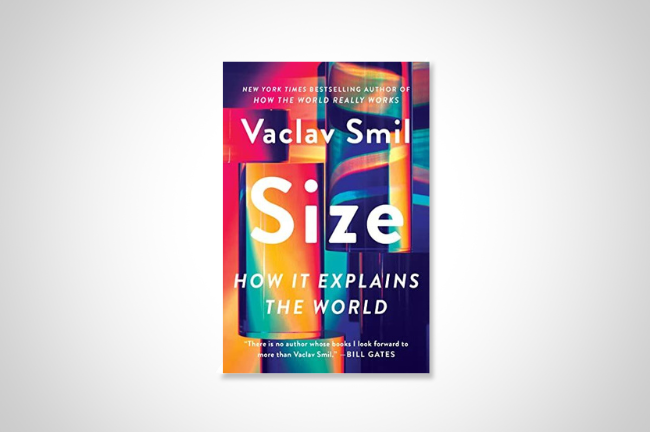You have /5 articles left.
Sign up for a free account or log in.

William Morrow
Size: How It Explains the World by Vaclav Smil
Published in May 2023
According to the prolific Vaclav Smil, one way to understand the world is to think in terms of size.
The largest cargo ships can now transport over 20,000 shipping containers (TEUS), six times the capacity of 1980 ships.
Supertall buildings (984 feet or taller) have given way to megatall structures (1,968 feet and up). In 2020, 37 supertall buildings were completed worldwide, compared to only two in 2000.
The average weight of a new car sold in the U.S. has increased by one-third since 1980.
In 1960, the median size of a newly constructed home was about 1,500 square feet. Today, the median size of a newly built house is 2,383 square feet.
Can we also use size to understand the changing higher education landscape?
Over the past decade, we have witnessed the growth of mega-universities. Western Governors University enrolls over 150,000 students, followed closely by Southern New Hampshire University at roughly 145,000.
We could look at institutional wealth as measured by endowment size. Harvard’s endowment has increased from about $10 billion in 1990 (constant dollars) to about $50 billion today.
Another measure of increasing size is the growth of postsecondary enrollment. In 1969 (the year I was born), just over eight million students were enrolled in U.S. institutions. Today, total enrollment stands at about 20 million.
Smil has never written a book that focuses specifically on higher education. But given how prolific he is in his book writing (he’s published more than 40), perhaps we can hope he’ll turn his attention to academia. Smil has plenty to write about when it comes to higher education. There is at least an entire book to be written about the energy usage of universities.
Sticking with the theme of size explaining the world, an in-depth investigation of every measure of growth across the postsecondary ecosystem is certainly in order. Will universities become more mega in the decades to come? Just how large will the largest endowments get?
Will academic buildings continue to expand their square footage in the face of a looming demographic cliff and the rise of online learning? What is the maximum range of enrollments for scaled online degree programs? How much will the highest-paid university presidents be making 20 years from now?
I will continue to read every book that Vaclav Smil writes. Will you?
What are you reading?








